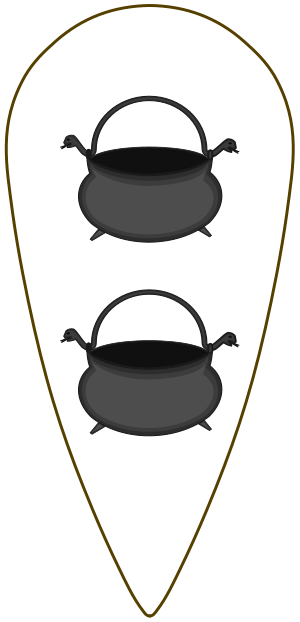House of Lara facts for kids
The House of Lara was a very important noble family in the medieval Kingdom of Castile (which is now part of Spain). Some of their family branches, like the Dukes of Nájera and the Marquesses of Aguilar de Campoo, were considered "Grandees of Spain." This meant they were among the most powerful and respected nobles in the country.
The Lara family gained a lot of land across different parts of Spain, including Castile, León, Andalucía, and Galicia. Members of the family also traveled to former Spanish colonies, setting up new branches in places as far away as the Philippines and Argentina.
The House of Lara was most famous in the history of Castile and León from the 11th to the 14th century. For example, Álvaro Núñez de Lara even served as a regent, meaning he ruled the kingdom for a young king, Henry I of Castile. Although King Peter the Cruel took away much of their land, most of it was given back by King Henry II.
Family History
The Lara family started in Castile in the 11th century. This happened when Gonzalo Núñez married Goto Núñez. Their marriage brought together their lands and wealth.
By the 13th century, people started connecting the Lara family to an old story called Cantar de los Siete Infantes de Lara. This epic tale from the 10th century is about revenge and takes place in the same areas where the Lara family later lived. However, there is no real proof that this story actually happened or that the people in the legend are related to the Lara family.
From the 12th to the 15th centuries, members of the Lara family often played big roles in the kingdom. Sometimes they supported the king or queen, and other times they went against them.
For example, in 1113, Pedro González de Lara helped Queen Urraca of Castile in her fights against her former husband. Pedro and his brother, Rodrigo, also challenged her son, Alfonso VII, in 1130. Later, Rodrigo helped Alfonso fight against the Almoravids, who were a group trying to take over parts of Spain.
Other family members like Manrique Pérez de Lara, Álvar Pérez, and Nuño Pérez de Lara argued over who should rule for young King Alfonso VIII. Álvaro Núñez de Lara became a regent for Henry I.
Later, Nuño González de Lara worked for Kings Ferdinand III and Alfonso X. But in 1270, he led a group of nobles against King Alfonso X. Juan Núñez I de Lara el Gordo (meaning "the Fat") did not want Sancho IV to become king and had to escape to France for a while. Juan Núñez II de Lara led several rebellions against King Alfonso XI.
The family faced hard times after King Peter won against his half-brother, Henry II.
The Manrique de Lara Branch
Only one part of the Lara family, called the Manrique de Lara, continued to be powerful after the Middle Ages. They supported the Catholic Monarchs (King Ferdinand and Queen Isabella) in their war against Joanna la Beltraneja, who also wanted to be queen.
In 1520, Emperor Charles V made the Manrique de Lara family even more important. He gave them the title of "grandee" as dukes of Nájera and marquesses of Aguilar de Campoo. This was a very high honor.
Members of this family branch served the crown in many important jobs. They were viceroys (who ruled a country or province as the king's representative), army generals, ambassadors to other countries, and even cardinals in the church. The first Count of Paredes de Nava became the Master of the Order of Santiago, a famous military and religious order. Famous writers like Gómez Manrique and Jorge Manrique also came from this part of the Lara family.
The original coat of arms (family symbol) of the Lara family is said to show two cauldrons. These cauldrons represent the family's ability to feed and support many followers, showing their wealth and power.
See also
 In Spanish: Casa de Lara para niños
In Spanish: Casa de Lara para niños


